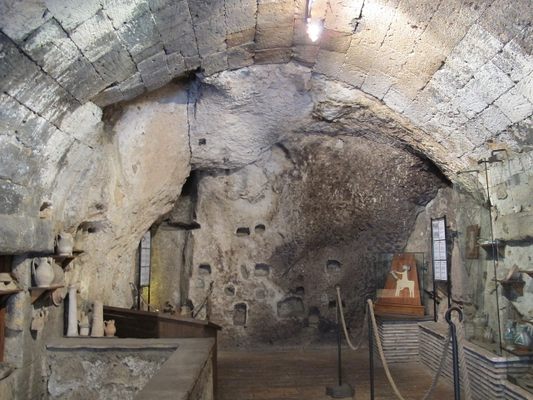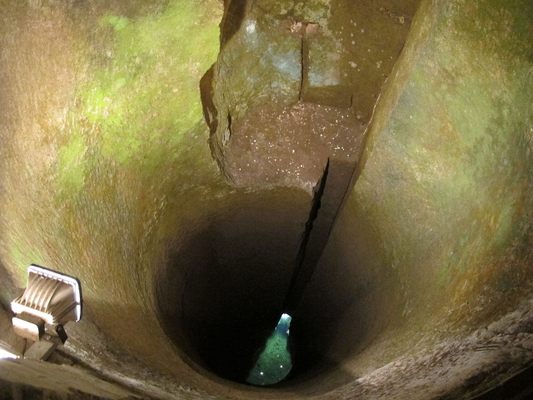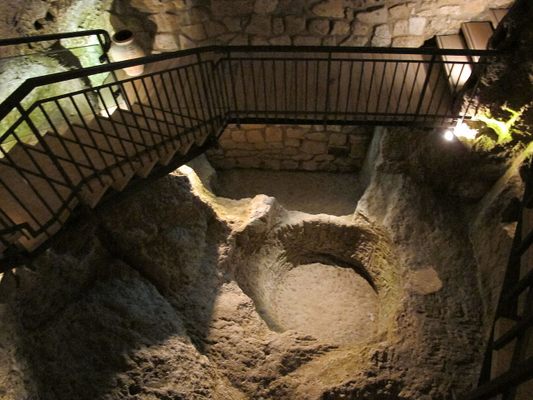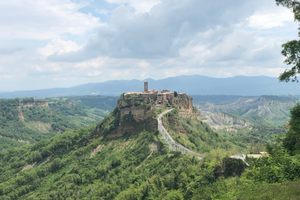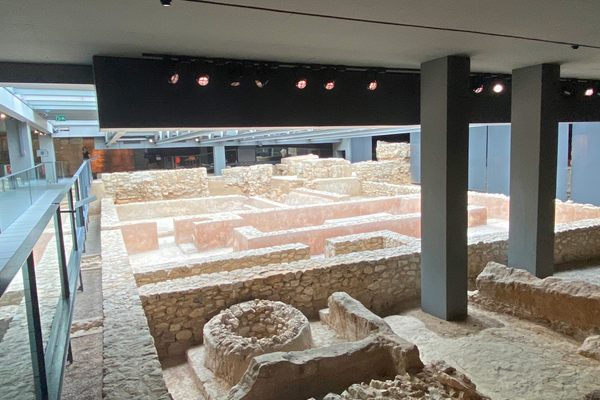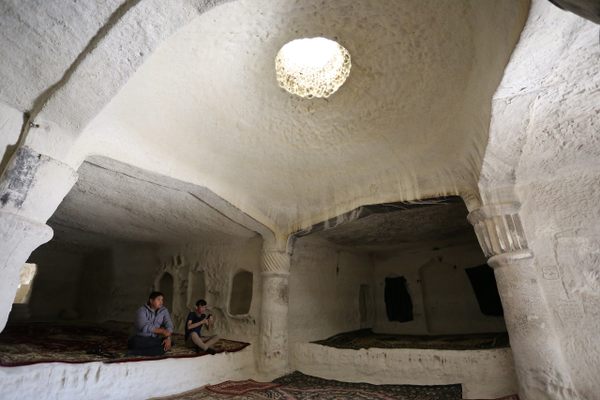About
Pozzo della Cava is a well excavated entirely from the rock upon which Orvieto sits; it consists of two unified sections 36 meters deep: two different wells, a small rectangular Etruscan shaft and a round Renaissance one for spring water.
In 1527, in fact, Pope Clement VII, fleeing from the Sack of Rome, took refuge at Orvieto and ordered the excavation of two public cisterns and the Pozzo della Cava, readapting the Etruscan structure. He wanted to reach the spring water to use if the city came under siege. Only some year later, the same Pope commissioned the famous well now known as St. Patrick's Well, located on the opposite side of the town.
When Tersilio Sciarra uncovered the Pozzo della Cava in December 1984, after more than three centuries of disuse, it was only 25 meters deep, the bottom clogged with earth and the debris of centuries. Not until the spring of 1996, was work undertaken that would restore the structure to its original appearance.
The same man, with his family, has excavated and made accessible also the nine caves around the well, without any public funding. Now the archaeological complex of Pozzo della Cava is a rare example of a national monument in Italy that is entirely privately owned.
Through the caves it’s possible to see some butti, small medieval pits used to dispose of rubbish, the remains of some ancient Etruscan burial tombs, and also one of the large pillars that formed the foundations of the medieval Filippeschi tower.
The last huge cave is really incredible: 14 meters of tufa rock cavern transformed between the 18th and 19th centuries into a tuff quarry. It hosts an Etruscan tunnel, a second Etruscan well and a lot of Mediaeval and Renaissance remains.
But the most important finds of all the caves are undoubtedly the two kilns for pottery: the first is a large Medieval kiln of a ceramic’s workshop with numerous majolica and terracotta original artefacts and a special collection of ancient ceramicists’ tools; the second is a small kiln used for the “third-firing” of precious Renaissance “lusterware” pottery.
There are also scenic underground rooms excavated during the Middle Ages to produce and preserve the famous Orvieto wines, the stairs of one of them were dug reusing an Etruscan cistern used to collect rainwater running off the roofs of nearby houses. At the end of the visit, it’s possible to have a break in a particular outdoor courtyard surrounded by medieval cliff houses.
Related Tags
Know Before You Go
Services: at the exit of the archaeological itinerary you can find
- La Bottega del Pozzo: restaurant - café - wine shop - ceramics - bokshop
- Cantiere Ceramica: ceramic studio
Nativity: from December 23rd to the Sunday after the Epiphany: “The Christmas Crib in the Well” with realistic self-moving life-size characters - every year a new experience!!!
Flavors of Italy: Roman Carbonara, Florentine Steak & Venetian Cocktails
Savor local cuisine across Rome, Florence & Venice.
Book NowPublished
July 12, 2021

